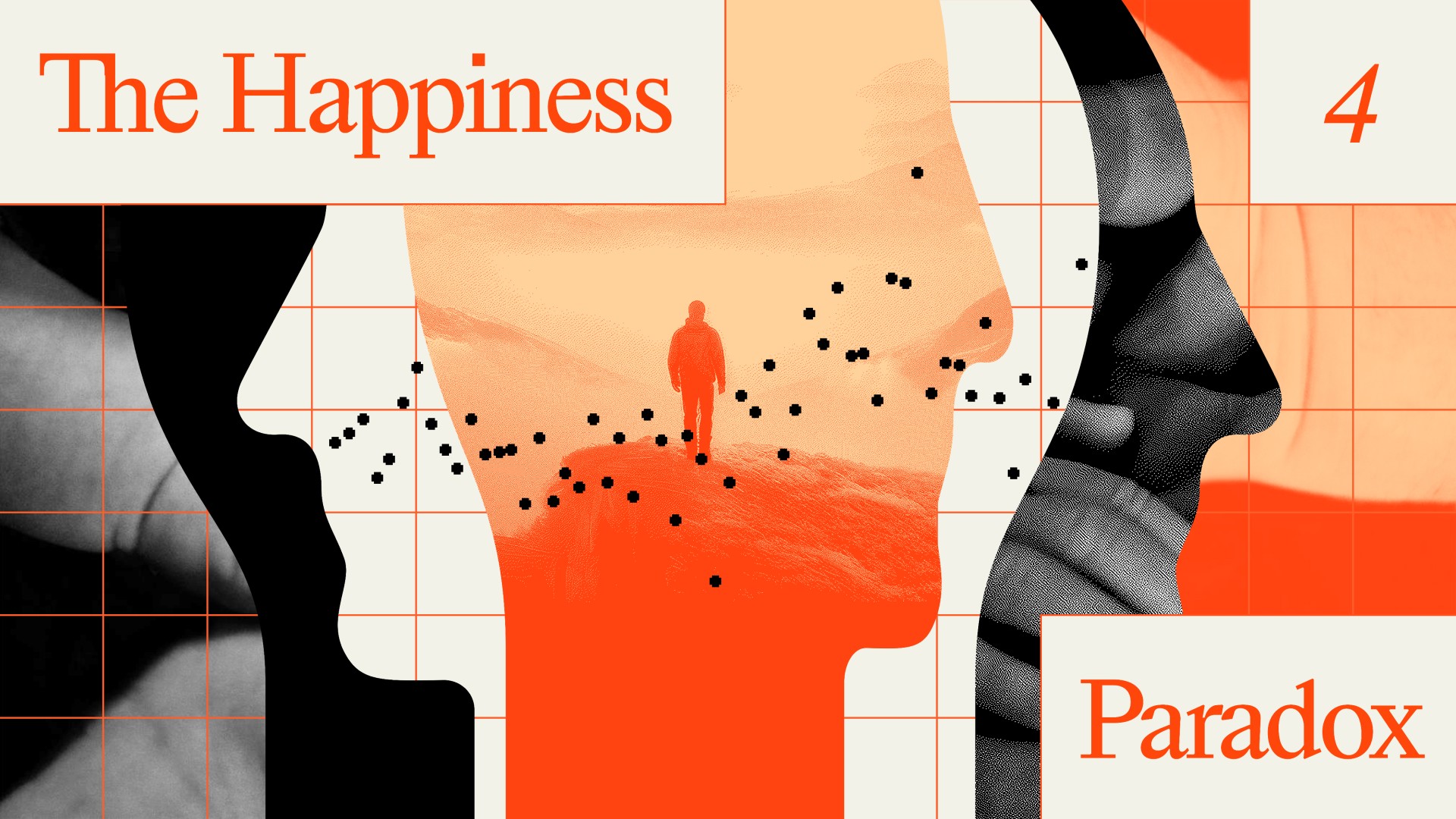Why we — despite the good and bad — fall back to a baseline level of happiness

Image source: Shutterstock
- The concept of the hedonic treadmill is that regardless of whether good or bad things happen to us, we always return to a set point of happiness and well-being. Hence, we have to constantly work to stay at a given degree of happiness, as though we were on a treadmill.
- Several studies exist that back up this finding, including one conducted on lottery winners and paraplegics.
- While this may seem like a bad thing, there are advantages; in addition, it may be possible increase your baseline level of happiness through certain activities.
Try to recall a moment that made you feel awful. Maybe your car was totaled in an accident, you got fired from your job, or you went through a bad breakup. So long as these things happened a little while ago, you probably feel all right today. The same might be true for moments that made you feel fantastic: getting a promotion at work, going on a really satisfying vacation, or winning a competition. Those things might have felt good in the moment, but they didn’t add up overtime, making you happier and happier.
Psychologists call this the hedonic treadmill. Our lives seem to be connected to a fixed point of happiness by an elastic band — things may swing our level of happiness out in one direction or the other, but the elastic band brings us back to a hedonic “set point.” The “treadmill” part of this concept comes from the idea that we must constantly work to maintain a level of happiness above and beyond this set point.
How true is this, really?
For many, the idea of the hedonic treadmill is counterintuitive. What if you were to win the lottery, or, conversely, become paralyzed? Wouldn’t you feel happier or sadder overall in those cases?
To answer this question, researchers looked at those two groups specifically. Researchers interviewed both lottery winners, paraplegics, and a control group. For the lottery winners and the paraplegics, their happiness-affecting event took place from one month to a year before the interviews. They found that lottery winners were just as happy as they had been before winning the lottery, about just as happy as the controls, and expected no change in their happiness in the future. The paraplegics were slightly less happy than they had been before, but still rated their lives as happy overall, and were happier than the researchers had expected them to be given their circumstances. Importantly, the paraplegics also expected to become happier in the future, unlike the lottery winners.
Admittedly, this isn’t a circumstance that many of us can relate to. But further research has been conducted on more common events. One study, for instance, looked at transitions in marital status, such as getting married, getting divorced or becoming a widow or widower. More specifically, it measured 24,000 people’s happiness over several years using a survey that covered a variety of subjects, including the respondents’ overall happiness for that year on a scale from 1 to 10 and their marital status.
On average, the majority of respondents returned to their baseline happiness within a few years. However, the researchers did find an exception to the hedonic treadmill effect: respondents who reacted extremely strongly to a given event did fail to return to their baseline happiness even years later.
So, are we doomed to live an entirely neutral experience?
Not quite. First, most people have a positive hedonic set point. One study reviewed the literature on the hedonic treadmill and found that roughly three-quarters of all individuals have a generally positive set point. This finding was drawn from a diverse sample of different cultures, ranging from the Amish to the African Maasai, adding to its strength.
Second, there is, indeed, some leeway in where our hedonic set points lie. Researcher Sonja Lyubomirsky estimates that genetics are responsible for about 50 percent of where our baseline lies — unfortunately, this is entirely out of our control. Another 10 percent is attributable to circumstances largely outside of our control, like appearance or geographical location. Another 40 percent is up to the activities that we choose to engage in — fortunately, these are very much under our control.
Activities such as exercise, expressing gratitude, altruism, and taking time to savor or appreciate the good things in life have all been shown to influence short-term wellbeing very much, and there is evidence that they can nudge that hedonic set point up the scale in the long-term as well.
Additionally, the hedonic treadmill is due, in part, to processes of desensitization and adaptation — we get used to things. Because of this, variety is a powerful means of combatting the hedonic set point’s inexorable tug. Persistently engaging in a variety of positive activities or varying how one performs a given positive activity can trick your stubborn brain into actually feeling good about things.
Really, the hedonic treadmill is rather Zen: nothing is permanent, which is something we should take solace in. We’ll get through the next breakup or demotion, and we’ll probably be okay. When it comes to becoming happier people, the research indicates that part of it is out of our control, in which case we don’t need to worry about it, and part of it is, indeed, under our control — that’s the stuff we should focus on.





